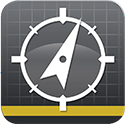Cadet Training
CADET TRAINING
Cadet Training in the British Merchant Navy with the SSTG.
The Ship Safe Training Group (SSTG) offers a fantastic opportunity to train in one of three specialised maritime cadetships, leading to a rewarding career at sea as an officer in the British Merchant Navy, with the flexibility to pursue shore-based roles in the future.
Whether you choose to become a Deck Cadet, Engineer Cadet, or Electro-Technical Officer (ETO) Cadet, you will enjoy a unique lifestyle that includes the chance to travel the world.
Our programmes combine academic study at a UK nautical college with hands-on training aboard ships, providing a well-rounded education and internationally recognised qualifications.
As a cadet, you will gain real-world experience and responsibility on technologically advanced vessels, developing the skills necessary to pursue various careers worldwide.
As a sponsored cadet, all your study fees and expenses are covered, and you will receive a training allowance from your sponsoring shipping company.
Explore the links below to learn more about our Deck Cadet, Engineer Cadet, and ETO Cadet programmes and start your journey with SSTG today.
Our Training Programmes
Embarking on a career in the Merchant Navy as a Deck, Engineer, or Electro-Technical Officer (ETO) Cadet offers a structured pathway to becoming a qualified maritime professional. Each cadetship involves a comprehensive training programme combining academic study with practical sea service, tailored to the specific responsibilities of the chosen role.

CADET TRAINING
Deck Cadet Training

CADET TRAINING
Engineer Cadet Training

CADET TRAINING
ETO Cadet Training
WHAT TO EXPECT
Deck Cadet Training
Deck Cadets undergo a three-year programme aimed at developing the skills necessary for navigation and overall vessel management. The curriculum includes academic studies in nautical science at a UK nautical college, interspersed with sea service to provide hands-on experience. Upon completion, cadets qualify as Deck Officers, responsible for the safety of the vessel, crew, passengers, and cargo, as well as navigation and adherence to schedules. This role offers progression opportunities to positions such as Chief Mate and Master.
Your Studies as a Deck Cadet training in the Merchant Navy
General Ship Knowledge
You will soon get to understand: shipboard terminology and its relevance; the differences between the many and varied vessel types; learn the different responsibilities for officers and ratings onboard; appreciate the etiquette expected of a ship’s Officer.
Maths, Maths and More Maths
Professional Studies
Studying at Sea
Experience gained at sea will include:
- a minimum of 12 months Sea Service.
- six months watchkeeping experience.
- completion of a MNTB Training Record Book (TRB).
At the end of your Officer Cadet training programme, you will qualify with a Deck Officer of the Watch (DOOW) Certificate of Competency.
This will enable you to take a watch on any size of vessel trading anywhere in the world. In a very small number of cases, vessel type specific training may be required, although this is usually easily achieved and any additional training short in duration.
Future Progression from Deck Officer to Master
A similar pattern of experience needs to be undertaken including a further 18 months service and additional education and training before the candidate can qualify as Master (or Captain).
In addition to qualifying for more senior roles you will also have to demonstrate the required personal qualities for promotion as vacancies arise.
Future Career Progression
Many seafarers consider following a career ashore later in their maritime working life. Many opportunities are available to enable seafarers to utilise their skills and experience gained at sea in employment ashore.
- Marine Education and Training.
- Marine Finance.
- Marine Insurance.
- Pilots and other roles connected with worldwide ports.
- Recruitment and offshore operations.
- Ship operations.
- Superintendency.
WHAT TO EXPECT
Engineer Cadet Training
Engineer Cadets engage in a three-year training programme focusing on the operation and maintenance of a ship’s engine and mechanical systems. The training comprises academic studies in marine engineering at a UK nautical college, complemented by sea service for practical application. Graduates qualify as Engineer Officers, tasked with ensuring the efficient functioning of the main engine and ancillary systems. Career advancement can lead to roles such as Second Engineer and Chief Engineer.
ENGINEER CADET TRAINING
Your Studies training as an Engineer Cadet in the Merchant Navy.
General Ship Knowledge
You will soon get to understand: shipboard terminology and its relevance; the differences between the many and varied vessel types; learn the different responsibilities for officers and ratings onboard; appreciate the etiquette expected of a ship’s Officer.
Maths, Maths and More Maths
Professional Studies
Studying at Sea
Experience gained at sea will include:
- a minimum of 12 months industrial experience, including a minimum of 6 months Sea Service.
- six months watchkeeping experience.
- Completion of a MNTB Training Record Book (TRB).
At the end of your Officer Cadet training programme, you will qualify with a Engineer Officer of the Watch (EOOW) Certificate of Competency.
This will enable you to take a Watch on any grade of vessel trading anywhere in the world. This will usually be restricted to serving on motor vessels unless additional sea service has been completed on steam vessels during training and additional examinations taken for this grade.
Future Progression from Engineer Officer to Chief Engineer
A similar pattern of experience needs to be undertaken including a further 18 months service and additional education and training before the candidate can qualify as Chief Engineer.
In addition to qualifying for more senior roles, you will also have to demonstrate the required personal qualities for promotion as vacancies arise.
WHAT TO EXPECT
Electro-Technical Officer (ETO) Cadet Training
ETO Cadets participate in a three-year programme designed to equip them with expertise in managing a vessel’s electronic and electrical systems. The training includes academic studies in marine electronic engineering at a UK nautical college, alongside sea service for experiential learning. Upon completion, cadets qualify as Electro-Technical Officers, responsible for the maintenance and operation of electronic control systems on board. This role offers potential for further progression within the maritime industry.
ETO CADET TRAINING
Your Studies training as an ETO Cadet in the Merchant Navy.
General Ship Knowledge
You will soon get to understand: shipboard terminology and its relevance; the differences between the many and varied vessel types; learn the different responsibilities for officers and ratings onboard; appreciate the etiquette expected of a ship’s Officer.
Maths, Maths and More Maths
Professional Studies
Studying at Sea
Experience gained at sea will include:
- a minimum of 12 months industrial experience, including a minimum of 6 months Sea Service.
- Completion of a MNTB Training Record Book (TRB).
E.T.O and Beyond
At the end of your Officer Cadet training programme, you will qualify with an Electro-Technical Officer (ETO) Certificate of Competency.
Currently there is no internationally recognised Senior ETO Certificate. UK maritime organisations are in the process of defining one which is expected to be available within the next few years.
General Entry Requirements
Prospective cadets must meet specific academic qualifications, be physically fit, and satisfy eyesight standards pertinent to their chosen discipline. Detailed entry requirements vary for each cadetship and can be found on our requirements page.
These cadet training programmes provide a solid foundation for a rewarding career at sea, combining theoretical knowledge with practical experience to prepare individuals for the responsibilities of maritime officers.
Start Your Career
Our experienced team of recruitment and training officers can provide you with help and guidance on roles and vacancies – and support in applying for sponsorship.
The Precinct Office
The Precinct
Rochester
Kent
ME1 1SR
We’d love to
hear from you!
Tel: +44 (0) 1634 820 820
E-mail: recruitment@sstg.org
The legal stuff
Privacy Policy
Terms & Conditions
© 2013 – 2022 Ship Safe Training Group Ltd (SSTG) All Rights Reserved except where otherwise stated.